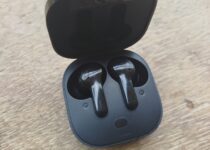What’s New in Wearables for 2025?
Wearable technology has seen a gradual transformation over the past ten years, which saw the rise of the simple step counters and fitness bands to what we have today, in which we see a full ecosystem of networking devices which talk to each other and which are changing the way we live, work, and take care of ourselves. By 2025, it’s very much on the horizon that the wearables field is going to see a great shift which leaves far behind the current smartwatches and wireless earbuds.
In 2025, we see the release of what is to come in wearables, which range from brainy rings that track stress levels to AI glasses which interpret live conversation — thus we are at the cusp of a new revolution in wearables which looks beyond health and lifestyle into self improvement. What’s new in wearables in 2025?
Here is a look at the latest trends, innovations, and game changer products which are redefining wearables this year.
1. Smaller and More Intelligent Devices.
In 2025, we will see the large shift towards wearables which are small and smart. Companies are out with the bulky wrist units and in with the design which is more subtle and sleek. What we are seeing is a trend away from wearables which draw attention to themselves to ones which integrate into the wearers life almost imperceptibly.
This change has brought designers back to the drawing board. Instead of just adding intelligence to watches, we see companies which are in the process of transforming sensible accessories — rings, bracelets, pendants, even ties — into what are in effect health trackers, alert devices, interactive elements of virtual worlds.
Short version: In the future, we see wearables less focused on what they do and more that they do it by far in a fantastic way.
2. Health Care Prognosis.
Tracking health has been the core purpose of wearables. In 2025, we see that they do a great deal more than track heart rate or steps. What we see now is that wearables are putting out nearly clinical grade data, which in turn enables the user to pay attention to his/her physical and mental health like never before.
The most revolutionary breakthroughs are:
- Continuous Glucose Monitoring (Non-Invasive): In addition, we have seen that over the years which we put in research and development, there are wearables for blood glucose monitoring which do not use needles. Diabetics and people that are into tracking their metabolic health will love this.
- Hydration Sensors: Some new sensors which will track level of hydration by means of skin conductivity or sweat, and we are to use them before we become dehydrated.
- Monitoring Stress and Mood: Wearables which track heart rate variability, skin temperature, and use machine learning for pattern recognition are growing in their role in mental health. They are to alert you before symptoms present as stress levels rise.
- Monitoring Menstrual and Fertility Health: Women today are seeing that health wearables for women are more accurate, more personalized, and also more predictive, which includes tracking of menstrual cycles, analysis of hormones, and fertility optimization with the use of very advanced biosensors.
- Early Disease Detection: AI today has the ability to identify the early stages of illnesses like respiratory infections; we see also very small changes in body temp, blood oxygen level, and sleep.
These are the first steps to a large scale implementation of wearables in health beyond fitness for preventive care.
3. Smart Rings Take Off.
In 2025, we will see the rise of smart rings. At one time, these were just a novelty item, but today these small devices do what only wristbands could do.
Why?
- Fashion and convenience: Individuals love that they have access to wear smart rings at all times of the day and night, which cause no discomfort.
- Functions: They track sleep, heart rate, and stress; also, some of which include gesture control for phone and app use.
- Battery life: Rings will go for a few days (up to a few weeks) on a single charge.
Even out there are devices which have broken the password or credit card code by using biometric like that of the fingerprint for authentication.
The future is a bit of a spy thriller.
4. AI enabled wearables.
Artificial intelligence is transforming 2025 wearables — not in what they do, but in how they are made. Instead of just tracking your activity, the device now interprets it.
Picture out a world where your fitness watch does more than count your steps — it also reports back on the quality of your muscle use and warns you of overexertion. Also, imagine a sleep tracker that goes beyond reporting REM cycles — we have ones which actually play a role in your sleep environment by use of a smart thermostat to cool your room or with soothing soundscapes to help you sleep.
They are out of context; instead, we have real time analysis of your behaviors which are in constant flux.
Others which include in the use of predictive modeling to put forth lifestyle changes, to alert you of future health issues before you see any symptoms, or to present mental health care based on your daily mood.
5. Smart Textiles and Clothing.
Wearable tech has gone beyond what we put on our bodies. In 2025, we see intelligent textiles at the fore front.
In terms of postural support and performance tracking, which is done via running shirts that also monitor your breath, we are seeing an increase in the use of what is known as intelligent clothing, which reports back real time bio metrics and is void of external devices.
Some garments are being embedded with:
- Stretchable sensors and e-textiles that track muscle strain, breathing, and posture.
- Temperature responsive fibers that react to ambient temperature.
- Anti bacterial and odor resistant textiles.
This technology in fashion is redefining what we put on our bodies — especially for athletes, injury rehab patients, and the elderly, which we are equipping with health oriented wearables that do not require bulkier equipment.
6. Augmented Reality (AR) Glasses: At Long Last ready for that which is prime time.
AR glasses have for years been a point of hype which didn’t live up to the mark. But 2025 is seeing these devices live up to what is promised by AR wearables, and they are moving past that of simply being novel tech toys.
Next out of the gate, AR glasses are now a fashion statement and feature:
- Real-time language translation
- Navigation information that appears in your field of vision.
- Facial recognition for contacts and coworkers
- Notifications and push alerts which float up.
- Integration into calendar and productivity tools which are used at work.
In our day to day lives and at work, we see these glasses being used in ways which are surprising — like doctors access to patient info during a procedure, technicians repairing equipment with on screen guides, and travelers getting real time translation and directions.
And also, unlike past designs, they do look like normal glasses.
7. Progress in Battery and Charging Technology.
Battery life. By 2025, that has really seen a large growth.
Thanks to innovations in:
- Solid-state batteries
- Low-power processors
- Solar-sustained charging
- Kinetic energy harvesting
Wearables are lasting us longer, and we see a trend of them charging faster. Some wearables are now going a full week or more between charges, and some are even harvesting power from your movement or body heat.
Wearables are at present a very practical accessory.
8. Environmental Health and Safety Protection.
Growing that which it is safe — particularly in urban settings — by 2025, wearables are to become tools for environmental monitoring and personal protection.
The list expands with the following:
- Air pollution sensors: Warning of high pollution or allergen levels to which users may be exposed.
- UV sun exposure alerts: Protecting your skin from the sun’s harmful rays.
- Fall calls and SOS alerts: Very much so for elderly individuals or those at high medical risk.
- Live updates of kids or loved ones.
These safety features are included in all types of wearables, from smartwatches to pendants and clothing, which in turn become your personal safety gear.
9. Personal development and self presentation.
One of the more obvious but powerful in 2025 is how wearables have become very personal. The days in which they were just tech gadgets are over; they are now tools of self expression.
You can:
- Swap out for a variety of watch faces or AR filters.
- Play with colors and lighting to match your wardrobe.
- Combine and play with different materials (wood, ceramic, recycled plastic).
- Set daily interaction or feedback preferences
Wearables that change function and design based on your personality type, what you’ve got planned for that day, or which mood you are in — this is a very personal approach to tech that weaves it into the fabric of your daily life more naturally.
10. Pet accessories and gear.
In the future, into the wearables movement, even our pets have jumped in. In 2025, we see that the pet wearables have become more intelligent which they were at first. They feature live GPS, health care which reports on heart rate, activity, sleep; also, we see that which pet’s mood can be determined by their voice tone or activity.
For pet owners, we have peace of health and safety, which also includes warning of disease. Also, other wildlife researchers and farmers are using wearables for cows and at risk species, which in turn protects ecosystems and improves animal care.
Conclusion: The Future is Upon Us Soon.
By 2025, wearables will be far more than just a convenience or a trend. They will be embedded devices which define how we take care of ourselves, interact with the world, and form our identity.
Whether it’s the ring that tracks your stress, the glasses which guide you through the city, or the shirt that improves your posture, wear tech is beyond what it does. It is how it fits into your.
As technology advances in size and function, the wearables of the future will look less out of place in science fiction and more a part of everyday life.
And we’re just getting started.


